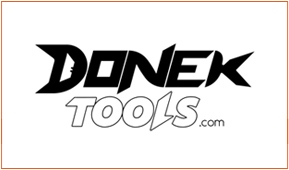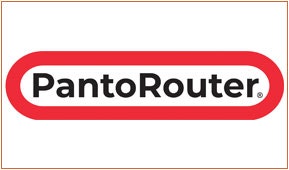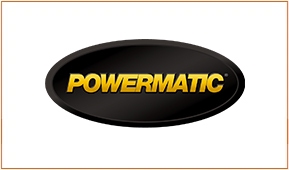How to Make Plywood Chair on CNC | ToolsToday
Click here for complete description
My son keeps taking my daughter's chair, so in this video I made him a new one using i2R A.24 CNC machine with Amana Tool® industrial CNC router bits available on our website
toolstoday.com/?utm_source=youtube&utm_medium=referral&utm_campaign=plywood-chair
What do you think of how this turned out?
Plans for this project are available on our website item no. KIDCHAIR
toolstoday.com/kids-chair-plans-downloadable-and-customizable.html
Feed, Speed & CNC Running Parameters
Amana Tool RC-45711 In-Tech Insert Carbide V Groove 90 Deg x 11/16 D x 21/64 CH x 1/4 Inch SHK Single Flute Router Bit
RPM: 18,000
Feed Rate: 40ipm
Plunge Rate: 20ipm
toolstoday.com/v-10600-rc-45711.html
Amana Tool 46202-K SC Spektra Extreme Tool Life Coated Spiral Plunge 1/4 Dia x 3/4 CH x 1/4 SHK 2-1/2 Inch Long Down-Cut Router Bit
RPM: 18,000
Feed Rate: 100ipm
Plunge Rate: 50ipm
Chip Load per Tooth: .0015
toolstoday.com/v-13779-46202-k-bit.html
Amana Tool 46100-K SC Spektra Extreme Tool Life Coated Spiral Plunge 1/8 Dia x 1/2 CH x 1/4 SHK 2 Inch Long Up-Cut Router Bit
RPM: 18,000
Feed Rate: 145ipm
Plunge Rate: 70ipm
Chip Load per Tooth: .004
toolstoday.com/v-13776-46100-k.html
VIDEO TRANSCRIPTION:
Getting started making a chair for my son, but first let's back up, and I'll show you how we got here.
“Eli chair right here”. “That’s Catie’s chair. Does Eli want his own chair?" “Ya.” “All right.” So, I pulled up the chair design that I designed for my daughter several years ago and just swapped out the name here for my son. Now we have everything ready to go.
That's the great thing about the CNC, is that you do the design work one time, and you have that file forever. So we can come in and customize it and change it at any time that we want. So, we're just going to test this and see how it looks on a preview. So we'll preview all of the tool paths, and that's essentially what our design is going to look like. Really happy with how everything looks, so let's head out to the workshop and let's get started making it.
Every time we use Oramask on a project, we get questions about how we get it to stick so well, so I figured I'd take you through my process. I start by sanding the entire sheet down to 220 grit, then blow off all the dust. I use my hand to wipe off any dust that's remaining. A tack cloth could also be used here. I roll out the masking, cut it to length, and then slowly apply the first little bit. Using a scraper, I smooth the masking down as I pull it out the back. For this project, you really only need a small piece where the name is going to be carved, but I applied it to the whole sheet for filming purposes, so that you can see what's happening better.
I put the sheet down on the i2r a24 CNC machine and held it in place using brad net nails. I'll answer at the rc-45711 90 degree V insert bit to start carving my son's name into it. You can see that masking is sticking down really well, and this is leaving a really nice clean cut, which will make the painting easier later. Essentially, the masking is there to protect from over-paint, so that way you can just pull it right off at the end.
So we got all of that carved and switched out for a quarter-inch downcut bit to begin cutting all of the pockets where the chair parts will slot in later. The plans for this project are available on our website, so if you're interested in making this for yourself, be sure to check it out there. The quarter-inch bit was used as a large area clearance tool, so I switched out for an eighth-inch down-cut bit to touch up the corners to get a tighter radius. The entire pocket could be cut with the eighth-inch bit just for time savings. I wanted to use that quarter-inch bit and hog out most of that material.
I switched out for an eighth-inch up-cut bit to drill the screw location holes in the slots to help with assembly later. An upcut bit evacuates chips better and prevents any burning you might get trying to drill with a downcut bit.
To cut the profile of the parts, I'm using a quarter-inch compression bit. Downcut bits make a clean cut on the top side but leave a frayed edge on the bottom side of the material. Upcut bits make a clean cut on the bottom side but leave a frayed edge on the top side of the material. A compression bit is the best of both worlds for profile cutting. It has both an upcut and downcut portion of the bit, so it leaves a perfectly clean surface on both the top and bottom of the material.
I added lead-ins to the cut to make sure that the first pass is below the upcut portion of the bit, so there's no frayed edges on my pieces. After everything was cut, I pulled up the brad nails, flipped it over, and trimmed the tabs using the fine multi-tool. The tabs are then taken care of with the flush trim bit over at the router table. This is definitely my go-to way of dealing with tabs.
These pieces now fit into these pockets, but it won't match up here in the corner because the radius of the bit. We're going to fix that here on the router table using a 1/16-inch radius round over bit. I round over all four long edges of the chair parts that slot in to match the radius left by the eighth-inch bit. This provides an absolutely perfect fit into the slots without having to do dog bone corners or some other form of CNC joiner.
I also went ahead and rounded over all of the other chair parts to ease those edges. Before pulling off the masking, I painted the carving using General Finishes Milk Paint and used a heat gun to warm up the masking to limit any grain pull as we're pulling it up. The masking pulled off perfectly, leaving a beautifully clean carve. The milk paint that I used is a little bit thicker than normal paint, so it didn't have any bleeding even without doing any sort of pre-sand sealer or anything like that.
All of the pieces are sanded one more time before assembly with 220 grit sandpaper. Each of the chair slots gets a bit of glue and is hit with a mallet to ensure that it is fully seated.
After the three parts are in, I can flip it over and pre-drill for screws, so the plywood doesn't split out on me. I went through and got all of the screws driven in and went in with a handheld screwdriver to make sure that all of the screws were facing the same way. I might have a bit of OCD about this, but I think it makes it look a lot nicer. I got that flipped over, and the second side was installed, pre-drilled and screwed together just like the other side, and the chair is now fully assembled.
I did a final sanding on the edges, and it's time to apply a finish. This chair is now complete and ready to give to my son. All of the tools used in this video are available on our website. be sure to check it out there. I'll let him sign us off, but hopefully you guys enjoyed this one. Have a great day, everyone.
"Hey Eli, you wanted your own chair. We got you your own chair, and whose name's on there?" "Yeah, you like your chair, yay! Yeah, now we can do some art with your monster trucks. Do you want to paint with monster trucks?" "Yeah, is that gonna be so fun?"
Thank you guys so much for watching. If you love this type of content, be sure to subscribe right over here, and click right over here for more great videos.
Thank you all for watching!
I hope you enjoyed seeing a behind the scenes look of what goes into making and filming a project. Please let me know your thoughts, questions or comments on this down below, and be sure to subscribe to the channel so you see all of our future videos; there's a lot more to come. I look forward to seeing you guys on the next one! Have a great day!
Tools Used in Video:
- Amana Tool RC-45711 In-Tech Insert Carbide V Groove 90 Deg x 11/16 D x 21/64 CH x 1/4 Inch SHK Single Flute Router Bit
- Amana Tool 46202-K SC Spektra Extreme Tool Life Coated Spiral Plunge 1/4 Dia x 3/4 CH x 1/4 SHK 2-1/2 Inch Long Down-Cut Router Bit
- Amana Tool 46100-K SC Spektra Extreme Tool Life Coated Spiral Plunge 1/8 Dia x 1/2 CH x 1/4 SHK 2 Inch Long Up-Cut Router Bit
- i2R CNC i-WCB-W42 W.42 CNC Essentials Kit, Includes W.42 4' x 2' CNC Machine, Stand, Dust Shoe, and 4 Clamps
- FEIN 71293661090 NEW AmpShare MultiMaster AMM700 Max Kit AS, Cordless Oscillating Multi-Tool with 2x 4 Ah Procore Batteries, Charger, and Full Accessory Kit in L-Box















